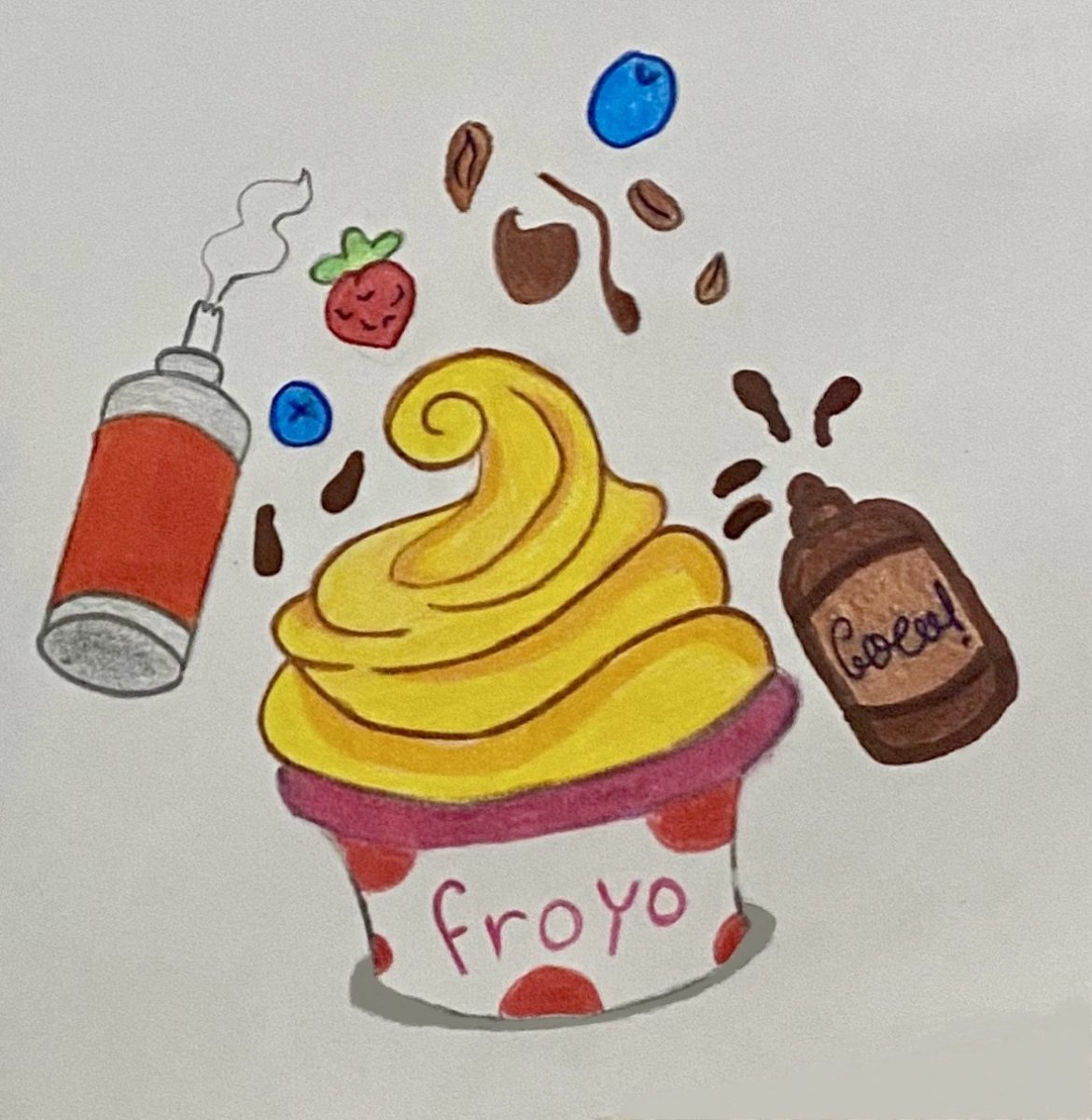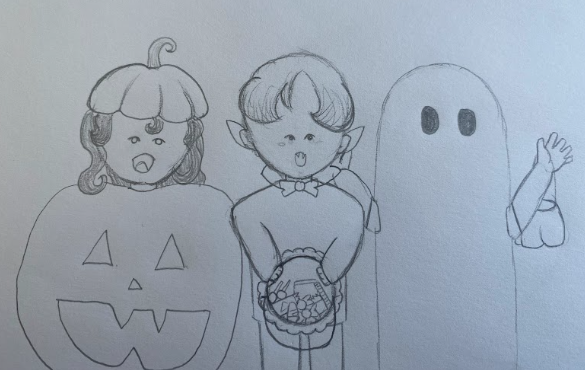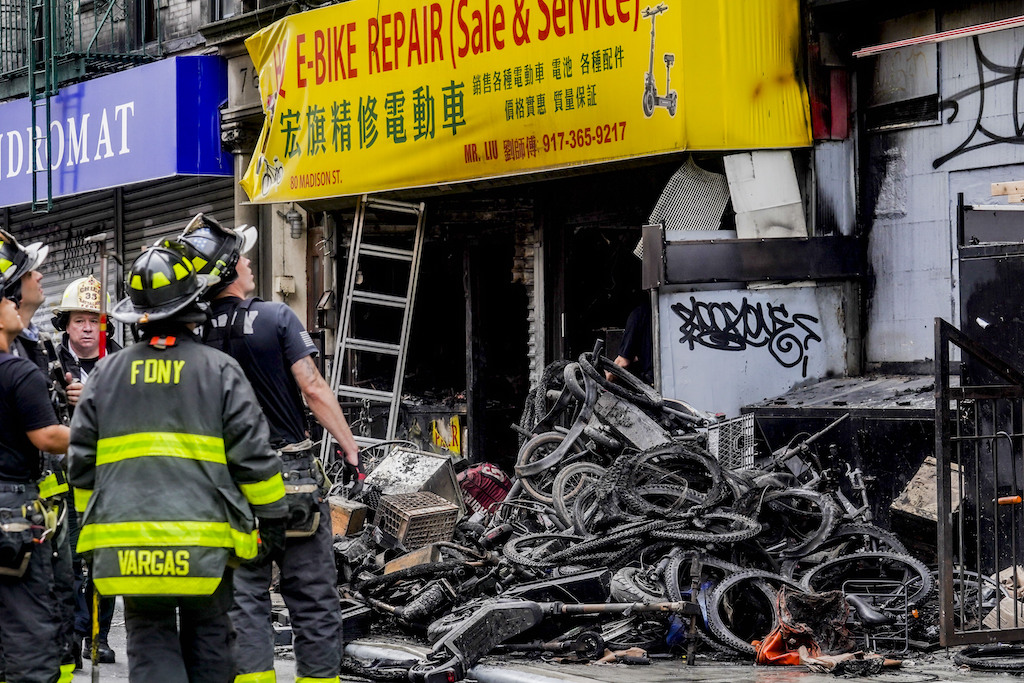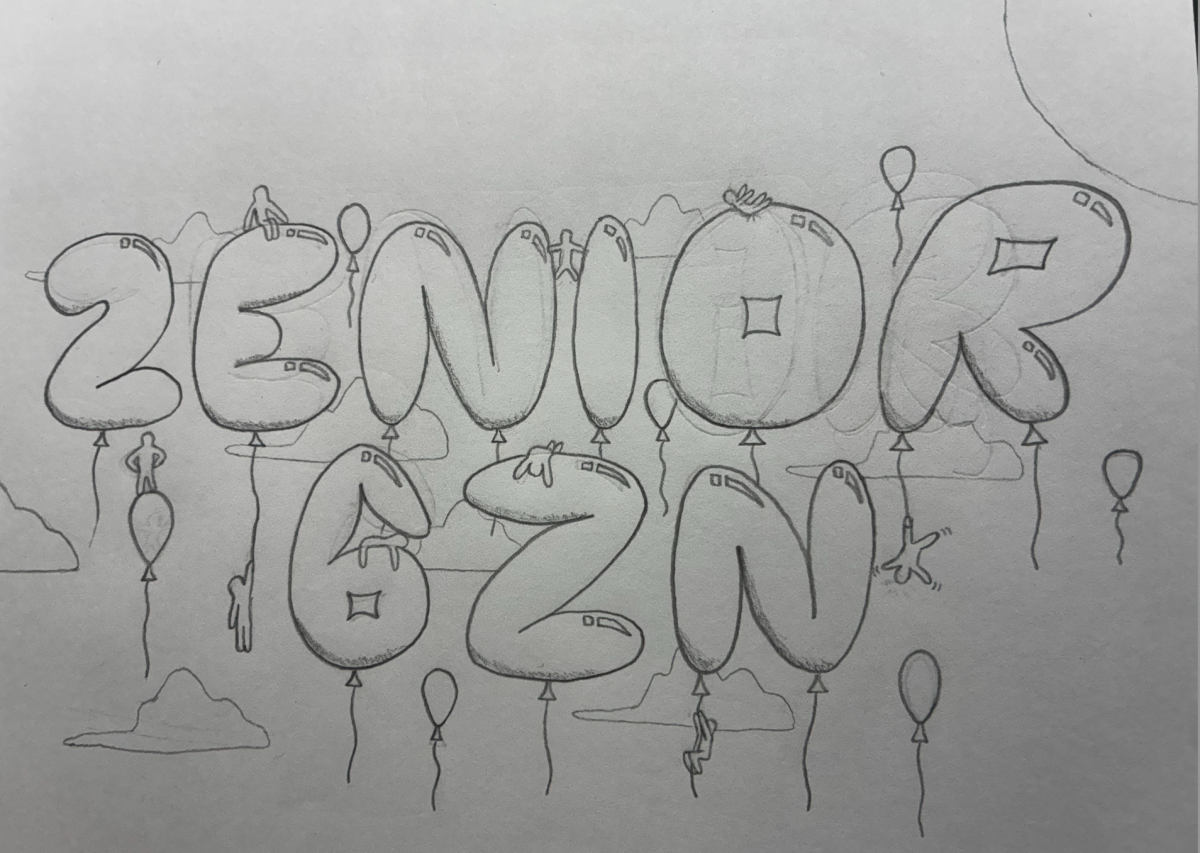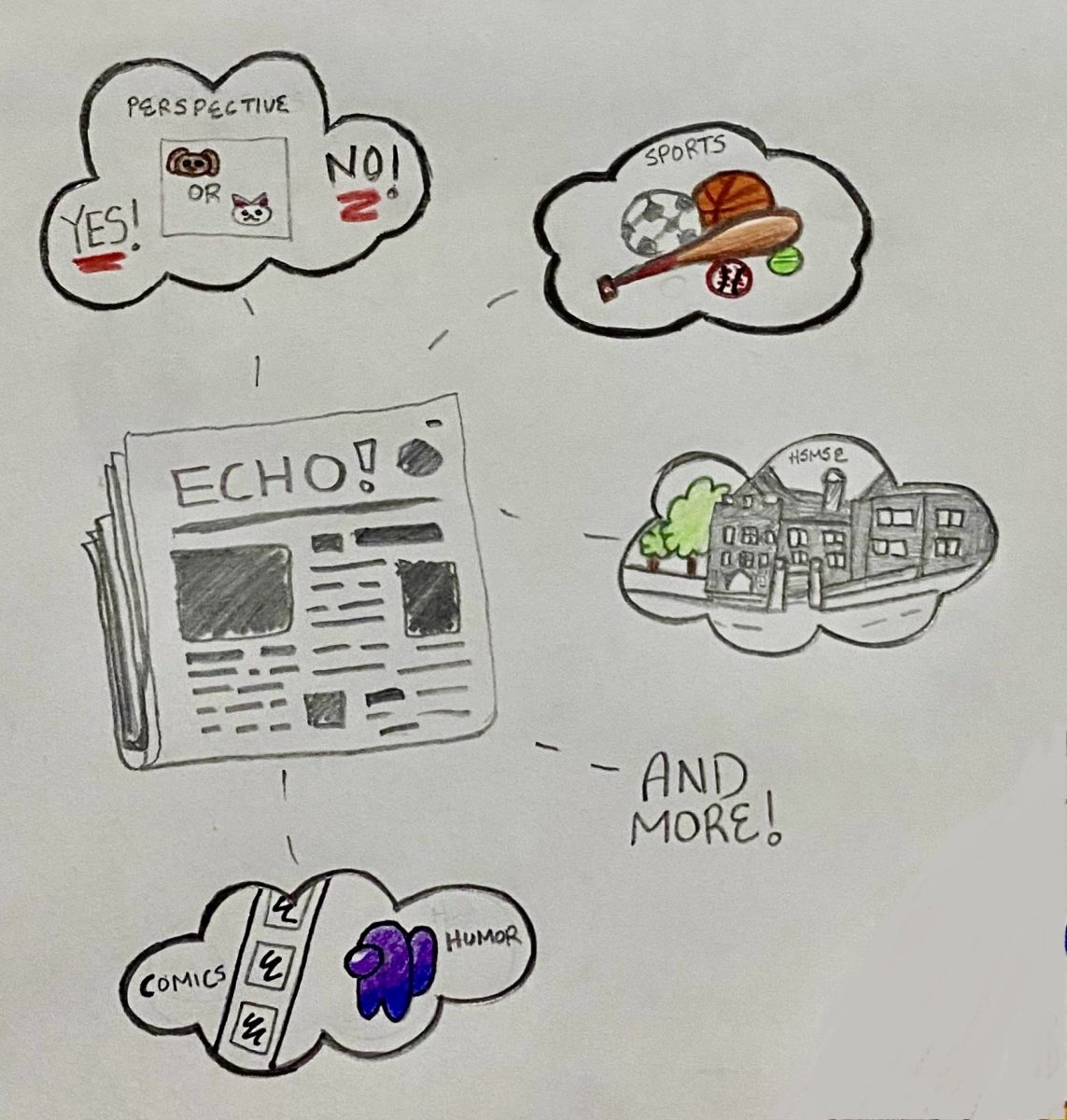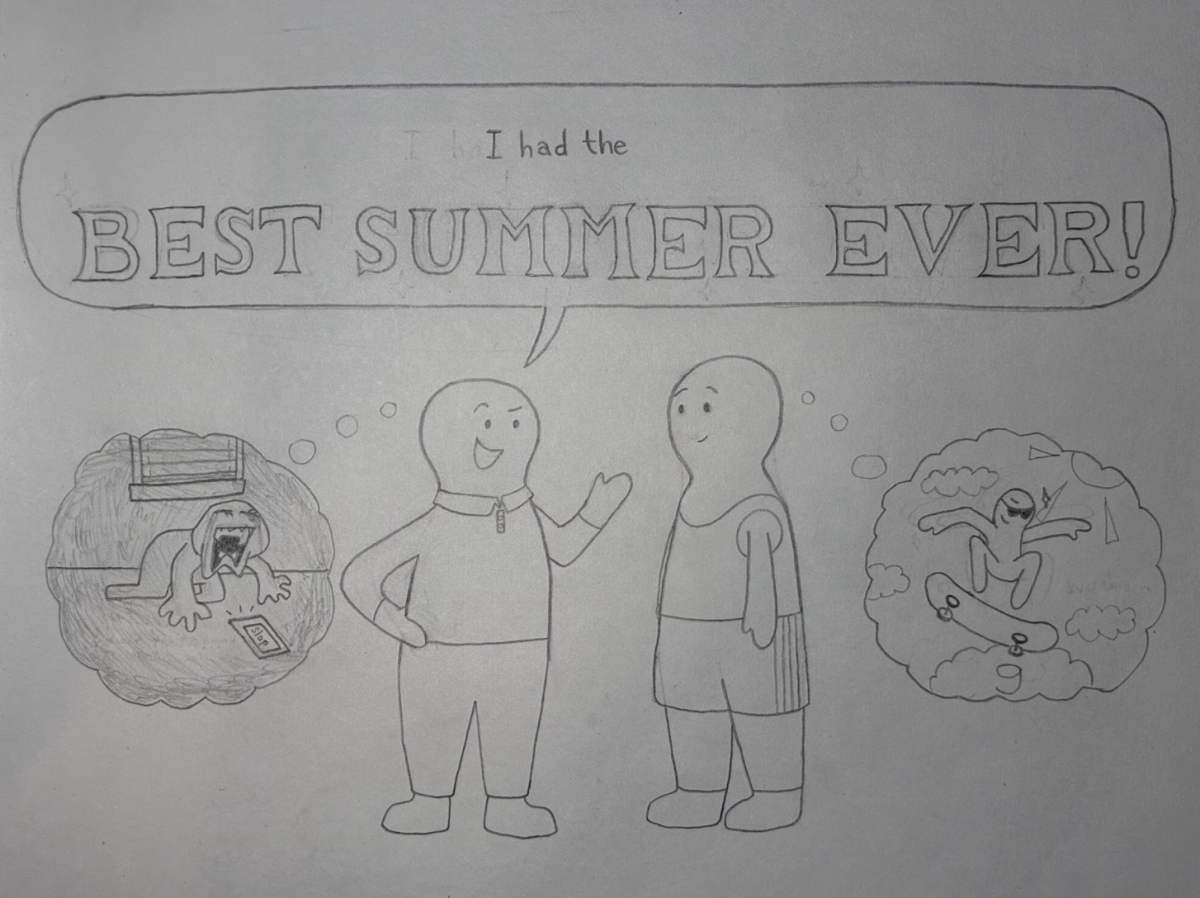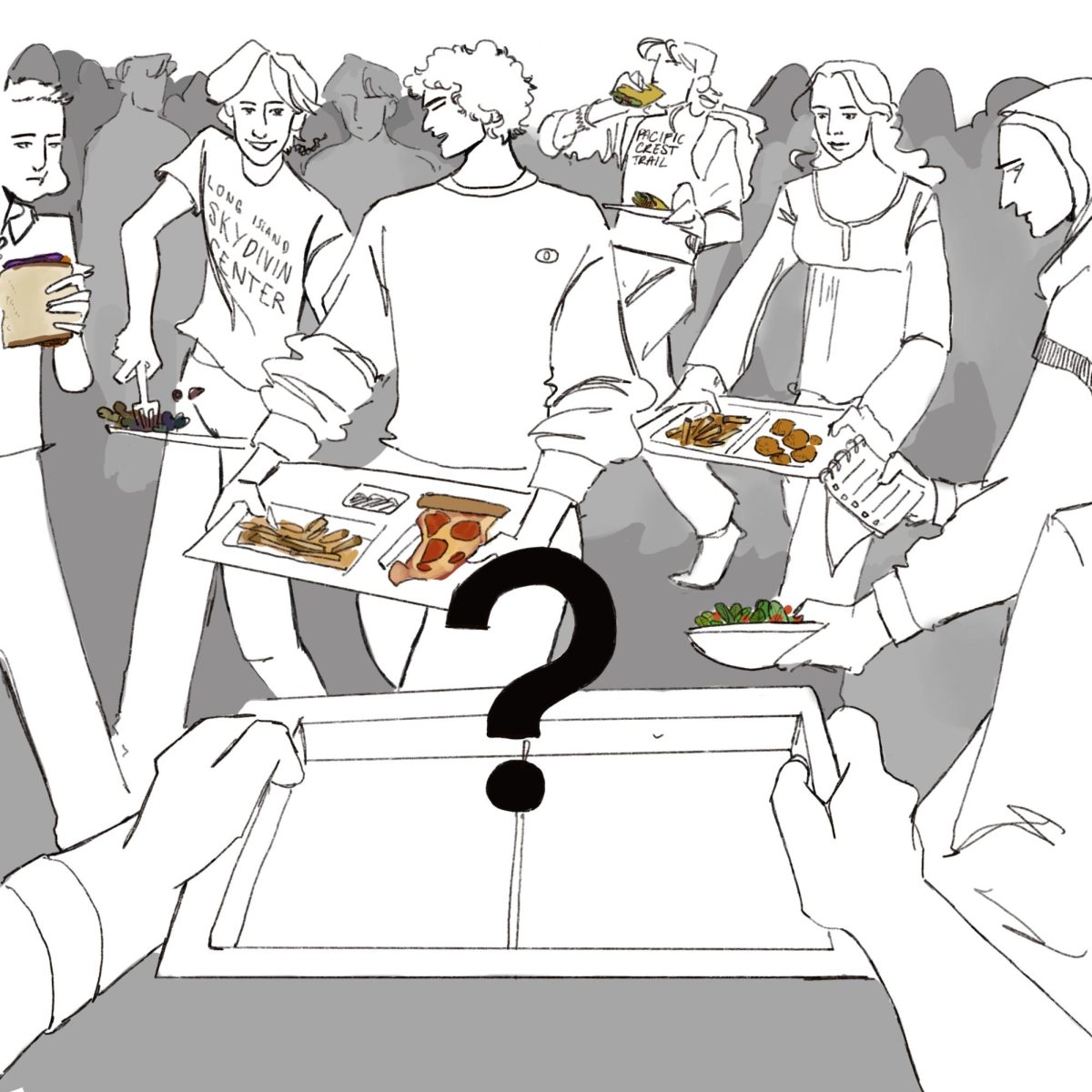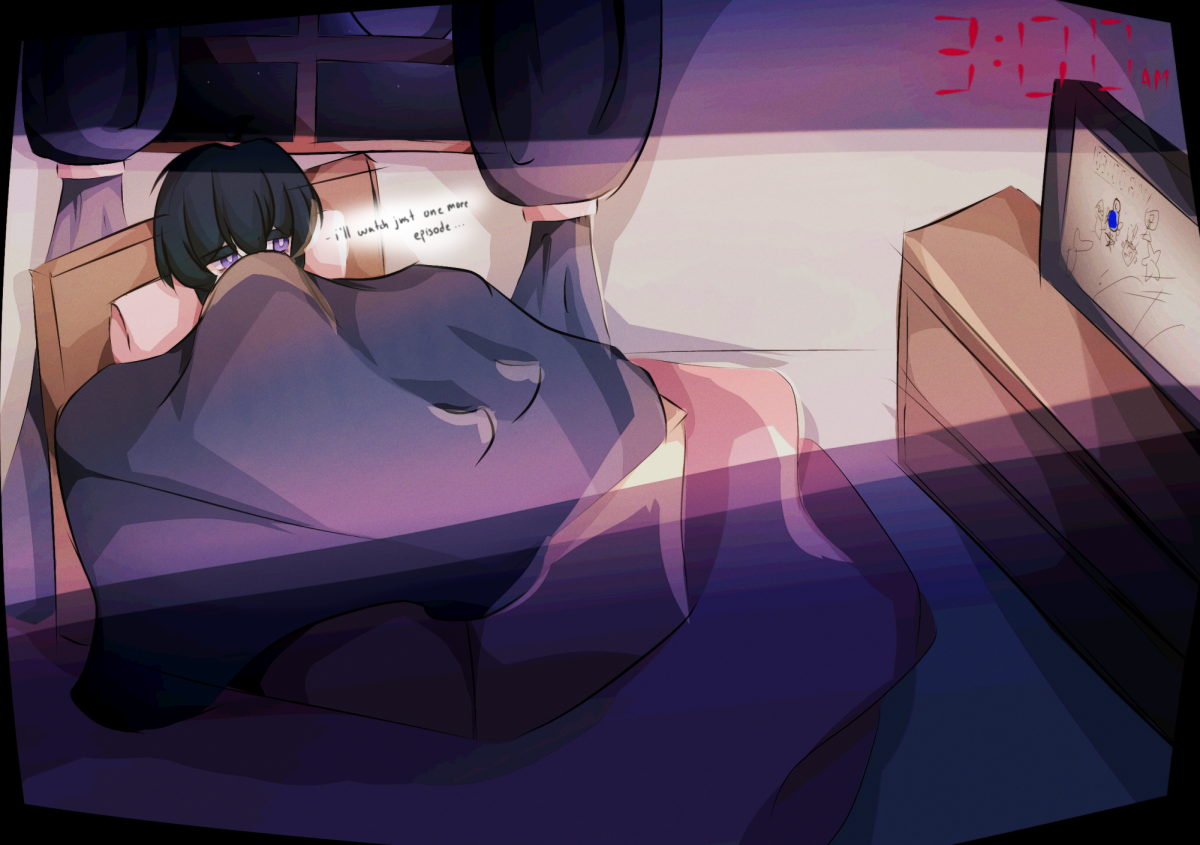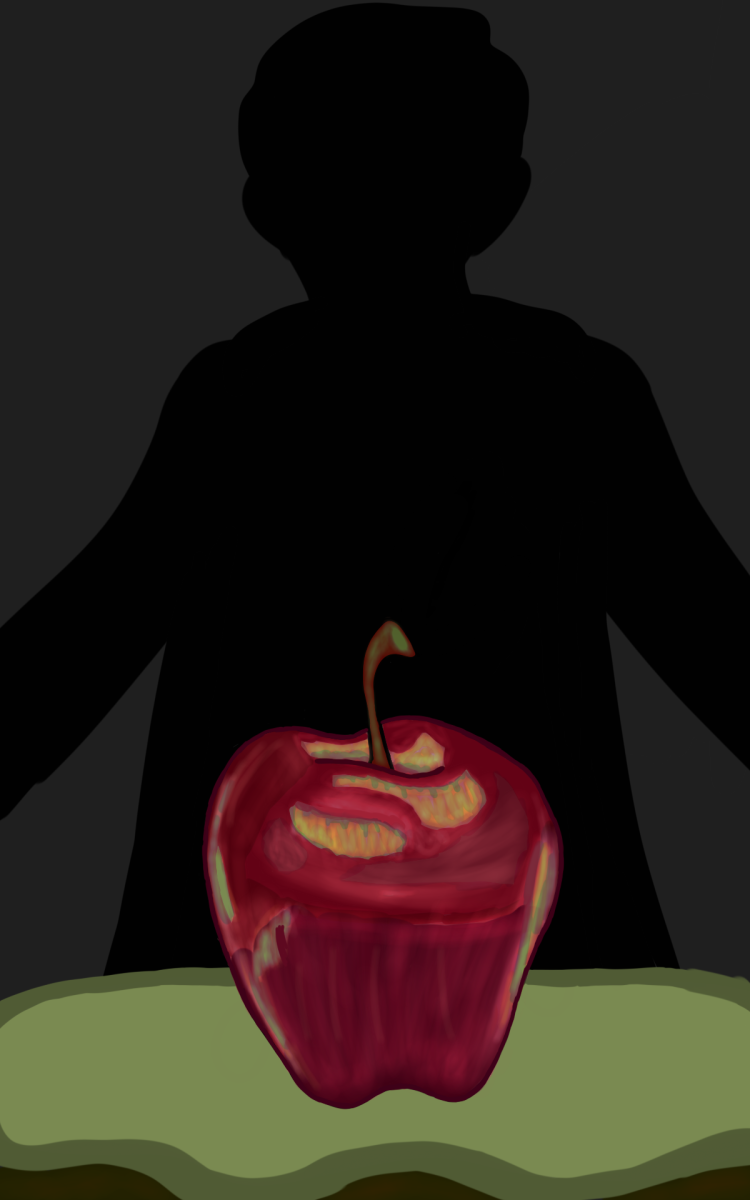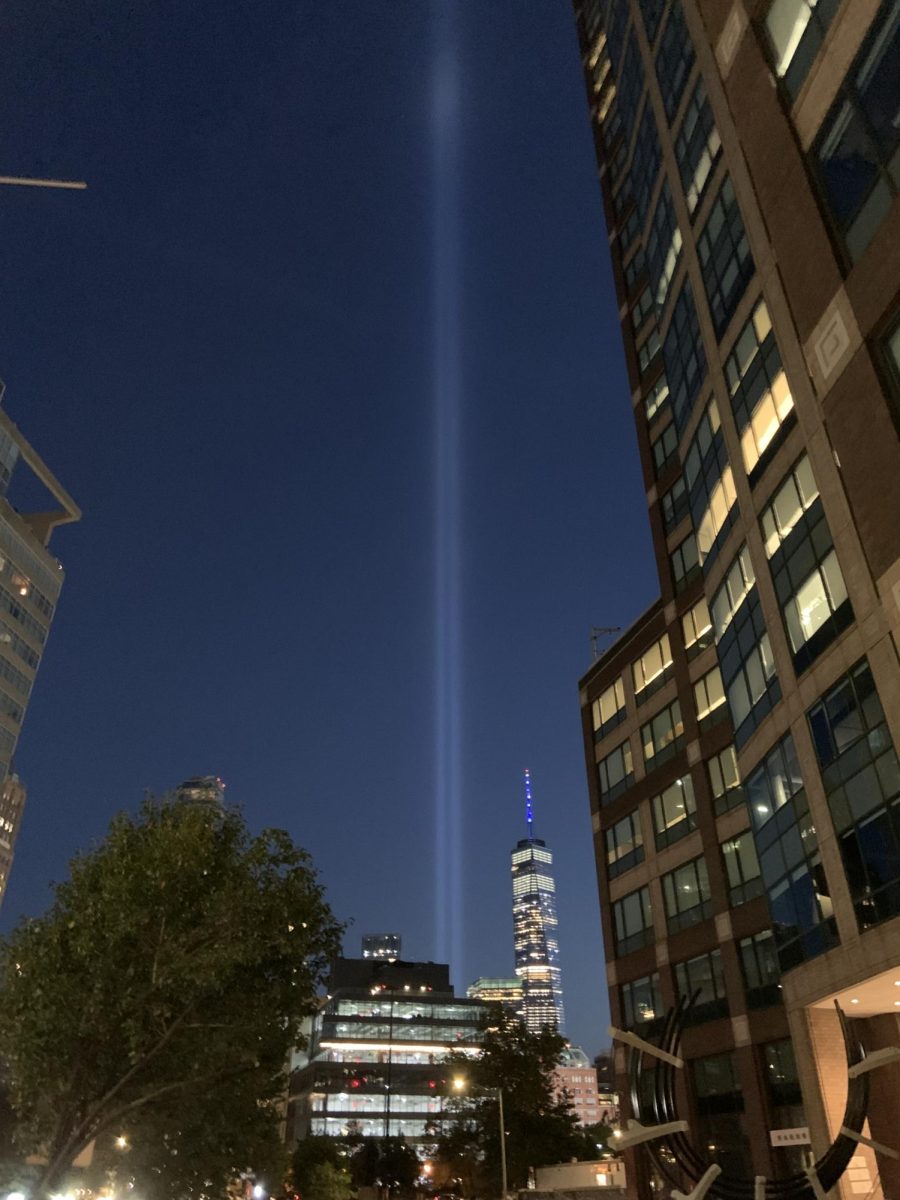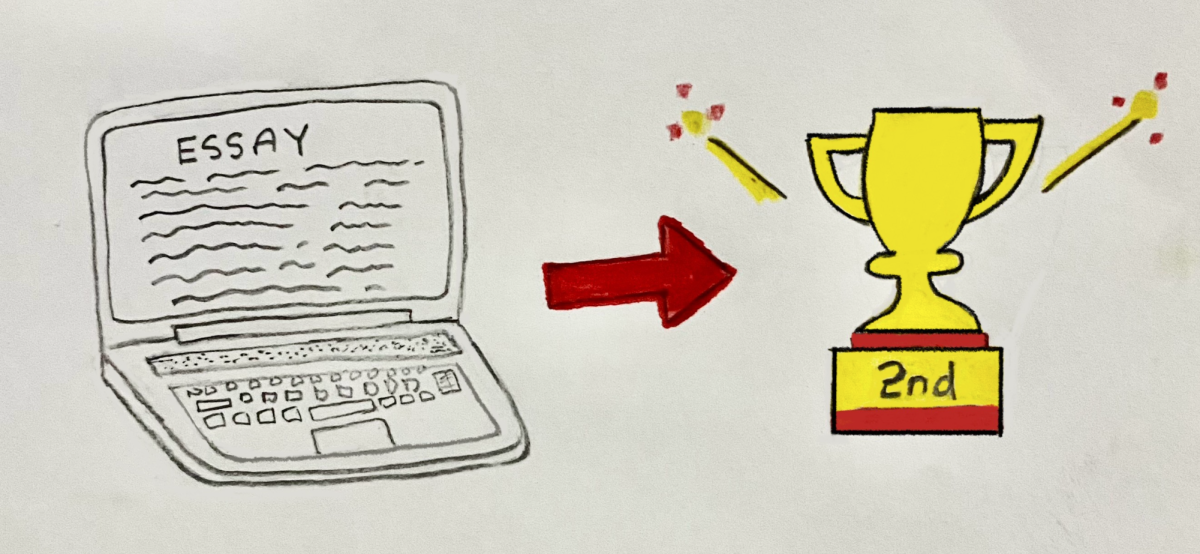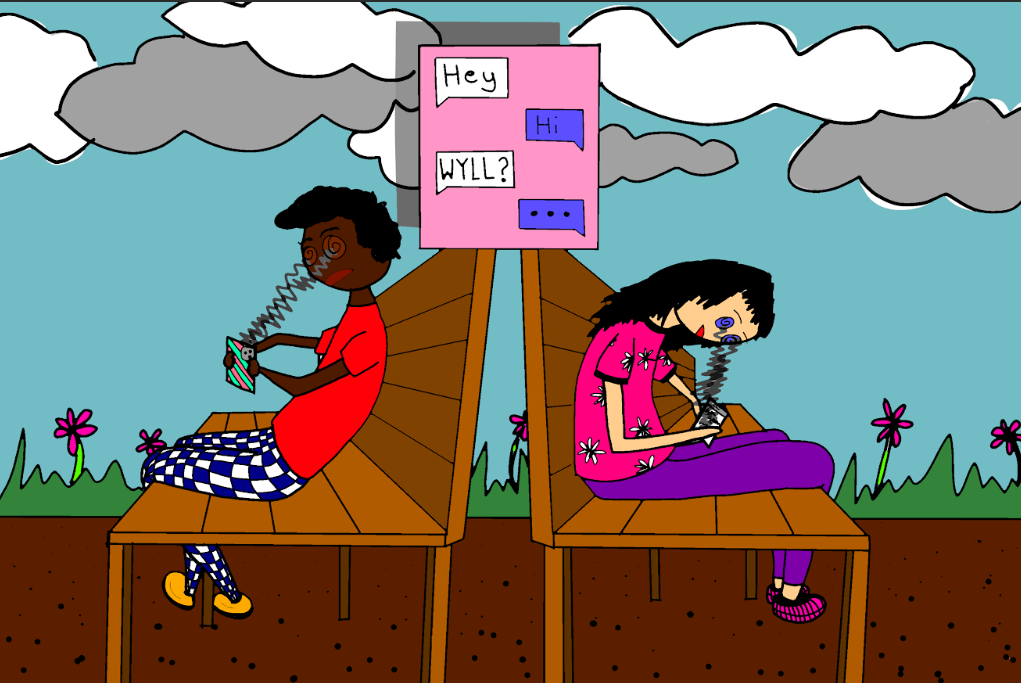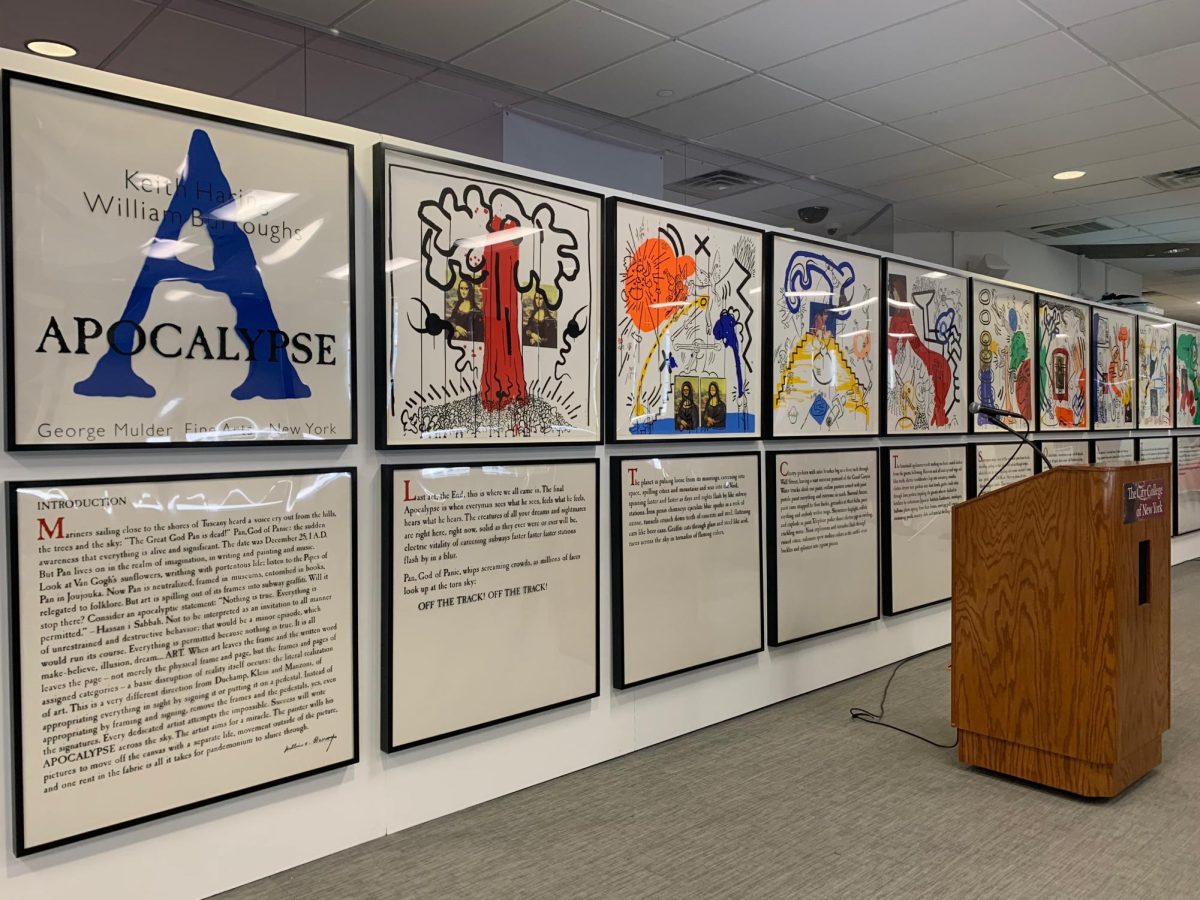The Apocalypse series is unlike anything else Keith Haring created.
Apocalypse was completed in 1988, the same year Haring was diagnosed with AIDS. It is a series of 30 pieces that Keith Haring completed in collaboration with Beat Generation writer William S. Burroughs. Burroughs, who actually taught creative writing at CCNY for a semester in 1974, wrote small dystopian stories depicting the end of the world. Once Haring received these pieces, he created art to accompany each one. He completed these in “a day—two, tops” (Vazquez).
It’s not the art you may have seen copied in masses on t-shirts, nor the carefree, optimistic work that people often associate Haring with. It’s the artist’s reaction to his impending death.
Yes—the familiar bold, black lines and imaginative, peculiar designs are still present, as well as meaningful motifs with strong colors. However, in Apocalypse, Haring makes use of new colors, techniques, and motifs.
Most notably, Haring utilizes collage. The overlapping figures and colors quarrel for the viewer’s attention, instilling in viewers the sense of disarray felt by many during the AIDS epidemic. He also uses the “devil sperm” motif (a sperm cell with devil horns), representing how the AIDS epidemic caused the public to villainize sex, and was received as a justification for homophobia. In Haring’s words: “[AIDS] gives so much fire to the people who are telling you that it’s wrong to be who you are.”
Haring used his art as his own medium for activism—he held great trust in it, especially during the AIDS epidemic. He created visual manifestations of his experience during this epidemic—an apocalypse that had crept into the lives of millions, but had been swept under the rug by most of society—to make its impact, as well as the impact that individuals can make, more visible.
Throughout the 1980s, HIV and AIDS were regarded as a death sentence. Although there still is no cure, many people around the world can now live long lives with HIV or AIDS due to treatment that limits the illness’ ability to conquer the body’s immune system. Haring and millions of others could not even dream of a treatment of this kind.
Unfortunately, just because treatment exists does not mean that it is available to everyone who needs it. Freezes and cuts in funding on both global and domestic levels will make treatment even less accessible to the public.
It is hard to hold out hope in situations like these. Keith Haring felt the same way just 36 years ago, when he was entirely defenseless to his development of AIDS. As a result, he did what any artist would do—he expressed himself.
Haring wove messages like “Still Alive in ’85,” “Ignorance = Fear,” and “Act Up For Life” throughout his works. His first work related to AIDS championed the message: “Safe Sex.” This first piece is fairly simple and characteristic of Haring, completed with acrylic paint on canvas. Apocalypse, though, is far more intense—the focus had changed entirely, as the issue escalated immensely. One-half of the young gay men in 1980s Manhattan died of AIDS (Gooch). Brad Gooch, author of Radiant: The Life and Line of Keith Haring described that seeing “people on streets, holding prescriptions, crying,” was common—especially in the East Village, where Haring lived. Still, society continued to conceal the disease. Many individuals who had fallen victim to AIDS fearfully went along with the persistent culture of shame, and simply did not have their real cause of death announced. They had vanished, taken by the disease in secret. Haring himself lost many of his friends to the disease, and it was trying to take him, too. He did not want to vanish, though—he wanted to give voice to his experience, which he knew he was not alone in. This is what makes Apocalypse so “striking, bold, [and] urgent” (Vazquez)—its 30 pieces encapsulate the vulnerability that was rendered in Haring and millions of others during the AIDS epidemic. The series houses Haring’s raw emotions—emotions that were (and still are) shared by many.
When many surrendered their voices to the “Plutonium weight” (Gooch) of an AIDS diagnosis, Keith Haring did not. Haring was vocal regarding his diagnosis with AIDS. He even spoke about this diagnosis in the Rolling Stone. His open attitude was not at all common, but certainly refreshing, even according to his doctor. It was also much needed. Haring himself stated that “There are so few people who are good openly gay role models or just good people who are respected who are open about their sexuality. Now there has to be openness about all these issues.” And he really did make a difference—not only through the actual art that he made, but also through its proceeds. Haring’s donations made up one third of the donations put towards ACT UP, an organization whose efforts to fight AIDS continue to this day. When he couldn’t deposit money to ACT UP on his own, he would send his friends to the bank with thousands of dollars in brown-paper bags. He also began the Keith Haring Foundation in 1989, with the desire to fight the AIDS epidemic and maintain the accessibility of his art. When I asked Gil Vazquez (current Executive Director of the foundation) to share something about Keith Haring that the media does not often portray, he attested that “[Haring] was somebody that relished fame… but he wanted to leverage his fame to give back.”
Vazquez met Haring just a month and a half before turning 18. In conversation, he shared that Haring was a “supernova superstar” who “still resonates” with him, years later. “He changed my life,” said Vazquez.
And he certainly changed the lives of many others, as well. His impact and unwavering efforts to defend his community and beliefs remain inspirational.
Quoting Burroughs in the series: “Every dedicated artist attempts the impossible” and “aims for a miracle” in the face of the apocalypse. It’s what prevents the planet from “pulling loose from its moorings” and “careening off into space.” Try it out—attempt the impossible; maybe it will save society from the next apocalypse.
Thank you to Jake Nill, Gil Vazquez, Brad Gooch, Taha Usha, the Leonard Litz LGBT+ Foundation, and the Colin Powell School at CCNY. My viewing of this incredible series, as well as the writing of this article, would not have been possible without the help of everyone here.
If you are interested in viewing the Apocalypse series, five pieces of it are located in the CCNY LGBTQ+ Student Center, where they will reside permanently. The series will also be making its way across other CUNY campuses in the future.
